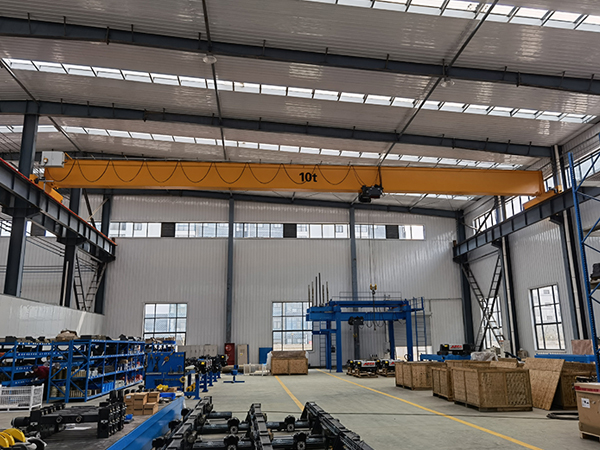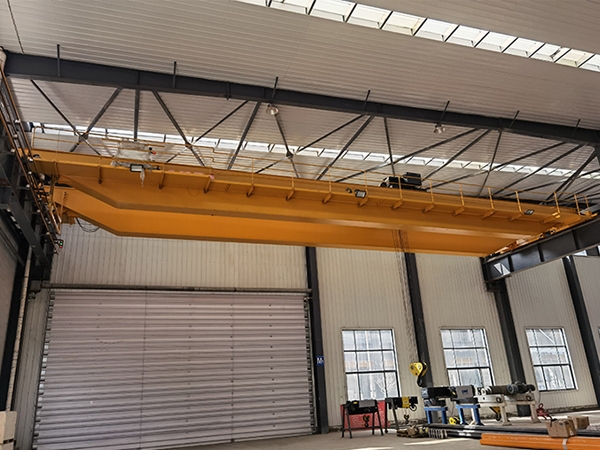Installing a workshop overhead crane is a complex process that requires careful planning, precise execution, and adherence to safety standards. The following detailed guide outlines the key steps and considerations to successfully install a workshop overhead crane, ensuring its optimal performance and longevity.

Planning and Preparation
Site Assessment: The first step in installing a workshop overhead crane is a thorough site assessment. This involves evaluating the workshop’s dimensions, layout, structural integrity, and existing infrastructure. It’s essential to identify potential obstacles, such as columns, beams, and machinery, that might affect the crane’s installation and operation.
Load Requirements: Determine the maximum load capacity required for the heavy duty overhead crane. This includes understanding the heaviest load that the crane will need to lift and any specific handling requirements. This information is crucial for selecting the appropriate overhead crane model and specifications.
Crane Selection: Based on the load requirements and site assessment, choose the suitable type of overhead crane. Options include single-girder or double-girder cranes, depending on the load capacity and span needed. Consult with crane manufacturers or suppliers to ensure the selected overhead crane meets all operational and safety requirements.
Structural Design and Modifications
Engineering Analysis: Engage a structural engineer to analyze the workshop’s existing structure and determine if it can support the overhead crane. This analysis will assess the building’s load-bearing capacity and identify any necessary modifications to ensure safe overhead crane operation.
Support Structure Installation: If the existing structure is inadequate, additional support structures, such as columns or beams, must be installed. These structures should be designed to distribute the crane’s load evenly across the workshop’s foundation.
Runway Installation: The overhead crane’s runway system, which includes rails or tracks, must be securely mounted to the workshop’s structure. The runway should be perfectly aligned and level to ensure smooth overhead crane movement. This step may involve welding or bolting the runway beams to the existing framework.
Crane Assembly
Component Inspection: Before assembly, inspect all overhead crane components for any damage or defects. This includes the bridge girder, end trucks, hoist, trolley, and electrical systems. Ensure that all parts comply with the manufacturer’s specifications and safety standards.
Bridge Girder Installation: The bridge girder is the main horizontal beam of the overhead crane. It should be carefully lifted and positioned onto the end trucks or support beams using suitable lifting equipment. Ensure the girder is level and securely fastened to the end trucks.
Hoist and Trolley Installation: Attach the hoist and trolley assembly to the bridge girder. The hoist is responsible for lifting loads, while the trolley allows the hoist to move horizontally along the girder. Securely bolt the hoist and trolley to the girder, ensuring smooth and unobstructed movement.
Electrical Wiring: Install the electrical wiring and controls for the overhead crane. This includes connecting the power supply, control panel, limit switches, and safety devices. Follow the manufacturer’s wiring diagrams and local electrical codes to ensure safe and reliable operation.

Testing and Commissioning
Initial Testing: Conduct initial tests to verify the overhead crane’s basic functions, such as lifting, lowering, and horizontal movement. Check for any unusual noises, vibrations, or obstructions that might indicate issues with the installation.
Load Testing: Perform load tests to ensure the overhead crane can safely lift and move its maximum rated load. This involves gradually increasing the load to the crane’s rated capacity while monitoring its performance. Load testing helps identify any weaknesses or defects in the installation.
Safety Inspections: Conduct thorough safety inspections to ensure all safety devices, such as limit switches, emergency stop buttons, and overload protection systems, are functioning correctly. Verify that all bolts, welds, and connections are secure and meet safety standards.
Operator Training and Documentation
Operator Training: Train all crane operators on the proper use and safety procedures for the workshop overhead crane. This training should cover basic crane operations, load handling techniques, emergency procedures, and routine maintenance tasks.
Maintenance Plan: Develop a maintenance plan that outlines regular inspections, lubrication, and servicing requirements for the overhead crane. Routine maintenance is essential to ensure the crane’s longevity and safe operation. Keep detailed records of all maintenance activities and inspections.
Documentation: Ensure all documentation, including installation manuals, engineering reports, load test certificates, and safety inspections, are properly filed and accessible. This documentation is important for regulatory compliance and future reference.
Final Checks and Handover
Final Inspections: Conduct a final round of inspections to ensure all aspects of the overhead crane installation meet the required standards. Address any outstanding issues or concerns identified during the testing and inspection phases.
Handover: Once the installation and testing are complete, formally hand over the overhead crane to the workshop management. Provide them with all relevant documentation, including operation manuals, maintenance schedules, and safety guidelines.
Continuous Monitoring and Improvement
Ongoing Monitoring: Continuously monitor the overhead crane’s performance during its initial period of operation. This involves regular inspections and feedback from operators to identify any operational issues or areas for improvement.
Feedback Loop: Establish a feedback loop with the crane manufacturer or supplier to address any issues that arise during the overhead crane’s operation. Regular communication ensures that any problems are promptly resolved, and potential improvements are identified.
In conclusion, installing a workshop overhead crane involves a series of meticulous steps, from planning and site assessment to assembly, testing, and training. By following these guidelines, you can ensure a safe, efficient, and reliable overhead crane installation that meets your workshop’s operational needs and safety standards.